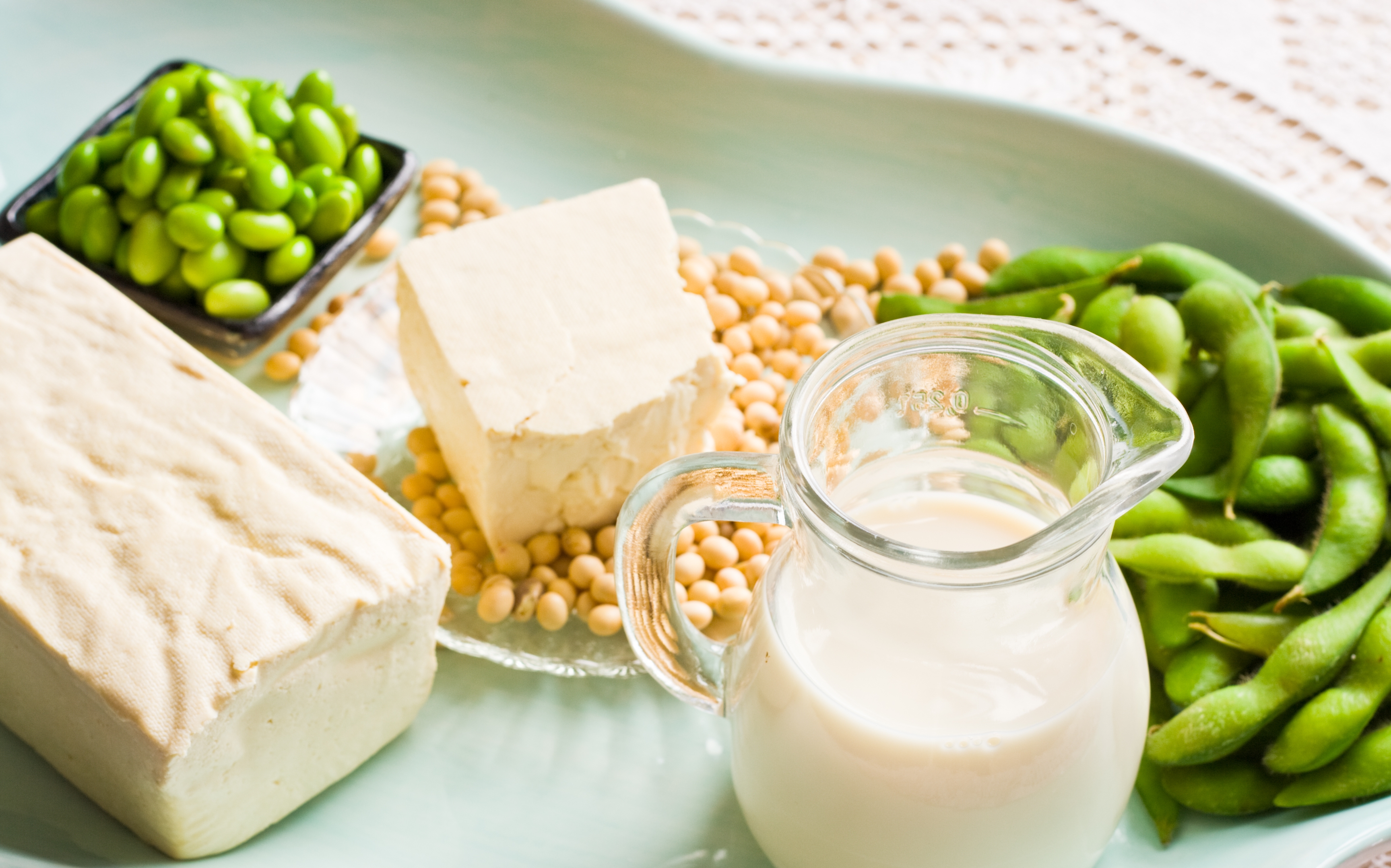Soy Bean
Soy is a plant in the seeds and pods category of vegetables. It is a type of legume. (Soya in French.) Soy beans are high in protein and fat. There are over one thousand varieties including; white, yellow, brown, black and multi-coloured. The edible part of the plant comes from the seed inside the pod which is referred to as soybean.

Market Forms
Soy can be found:
- fresh in pods (green)
- Frozen (IQF) after shelling
- Frozen in-shell
- Processed into soy milk (including flavour-added types)
- Processed into fresh tofu (various types from soft to firm, also called bean curd)
- Shelled and dried (yellow)
- Bean curd skin, dried, semi-dried, or fresh
- Bean curd pockets (inari in Japanese)
- Soy bean oil used like vegetable oil
Further processing produces:
- soy sauce
- bean paste (miso)
- Texturized vegetable protein
- Dairy-free products like soy cheese, soy yogurt, soy ice cream etc.
- Dried and roasted salted snacks
Soy is also used in animal feed, fire-fighting foam, and plastics.
Nutritional Value
Soy is considered a complete protein, meaning that it even though it is from a plant, it contains all 9 essential amino acids. These are the amino acids needed from our diet since our bodies do not produce them.
History
Soy is an ancient bean from Asia. It dates back to 3000B.C. . Missionaries brought soy beans to Europe in the 18th century. Soy made its way to the US in the 19th century. Now, in the US, it is the second largest crop in the US and contributes to the problem of monoculture.
Ways to Cook
Cooking soy depends on the drastically different market forms of the plant.
Fresh beans:
- steamed in-shell (edamame in Japanese)
- shelled and added to stir fries, poke bowls, salads
- pureed into dips and cold sauces
Soy milk (made from dried yellow soy beans) can be used
- a simple beverage as-is
- to make tofu
- as a dairy milk replacer (in smoothies, in coffee etc.)
- as a dairy replacer in cheese, ice cream etc.
Tofu
- in hot stir fries
- dredged in cornstarch and deep-fried
- pan fried larger pieces
- cold dishes on its own
Soy sauce or soy bean paste--as a flavouring agent in
- marinades
- cold sauces
- dips,
- condiment
- in braises
- in soups (miso)
Asian cultures all use soy on a regular basis and in various ways. Tofu, soy sauce, and soy bean oil are all stapes in Japanese, Chinese and Korean cuisine.
Allergen Alert
Soy is one of the top 10 food allergens in Canada - https://foodallergycanada.ca/allergies/milk/
More on Cooking with Soy
Soy Bean Recipe Links
Some of our favourite videos
The Secrets of the Seed: Fruits, Vegetables, and Seeds (Barbara Friedlander)
https://www.alberta.ca/us-crops-where-are-they-grown.aspx
https://open.alberta.ca/publications/varieties-of-pulse-crops-for-alberta
